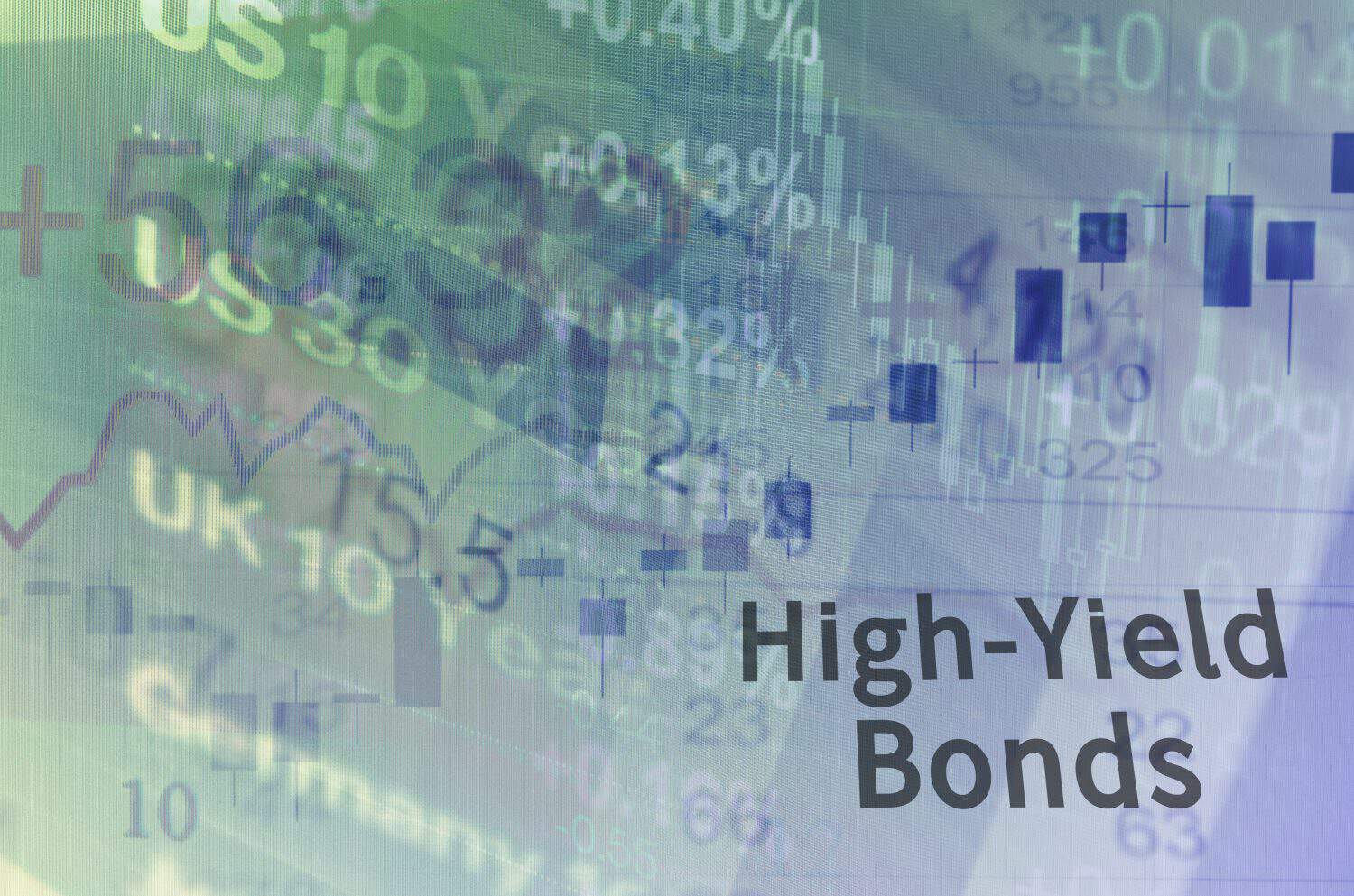Investing
Here Is What You Need to Invest to Have $50,000 per Year in Retirement

Published:

24/7 Wall St. Insights
Oh, retirement. A soon-coming reality for some, and a slight possibility for others. Some speculate that they will have to work until they die, others are close to frying up the nest egg they started contributing to 30ish years ago. For those of us who have at least 30 more years of the job force ahead of us, making a yearly salary of $50,000 in the first place is a tough thing to do, and might even feel like something that is far out of reach, let alone setting aside money to save for the far off future. A healthy retirement portfolio should allow the investor at least $50,000 to live off of per year. Depending on how much you have in savings now, determines the type of income-paying equity funds you want to invest in.
Building an investment portfolio can be a daunting task. It can feel risky, unreliable, and unpredictable. For the average person looking to invest their hard-earned cash in order to generate $50,000 per year to save for retirement, there can seem to be a lot of directions one could go. One of the biggest mistakes that new investors make, is to go all in on one or two high-yield stocks. The problem with this is that those payouts are often unreliable and come with a big risk.
There are several different options for investors to take advantage of top income-paying equity investments. The answer to how much one needs to invest to receive $50,000 or more a year in retirement really depends on how much you are making today, and how much you have in your savings account. It can range from an upfront sum of $50,000 to as little as $50 per week.
Here are the top income-paying equities for all budgets:

With most things in life, moderation usually is a safe bet. According to Forbes, if an investor (you) creates a portfolio with stocks that have a history of growing payouts that yield 7%-8%, that can create a reliable income of at least $50,000 per year. Forbes says that it would take at least $500,000 in initial investing to achieve this goal using a CEF.
Breaking up the desired elements of a good CEF, according to Forbes, is that it has a history of growing payouts. That means that throughout the company’s history, shareholder payouts happen reliably, and the amount continues to grow. So, If you are trying to decide between a fund or stock that has shareholder payouts that fluctuate drastically and have periods of growth but also periods of decline, even if that fund has a higher payout yield, it is likely not as good of an investment as a stable, lower yield payout.
Forbes explains that a “goldilocks yield,” or a top-income paying equity, would be achievable by investing in CEFs (closed-end funds). Closed-end funds differ from open-end funds in that closed-end funds only accept a certain number of one initial round of public offerings, or an IPO (initial public offering) to raise all the capital it needs upfront. After the initial round, no new stock shares can be created, and no new money will flow into the fund, but shares can be bought and sold on a stock exchange. The capital is raised by investing in assets like bonds and stocks. Most closed-end funds trade on a secondary market like the S&P 500. Some examples of CEFs would be real estate funds, BDCs (business development companies), and bond funds.
All closed-end funds require a brokerage firm to manage the account professionally. The account management would exclusively do the buying and trading in secondary markets. CEFs are traded several times throughout a trading day (actively traded), rather than being priced on the market strictly according to their NAV (Net Asset Value) which is calculated yearly, the price it is sold for is market-driven, and can either be at a premium or a discount relative to its NAV. The trading price gets evaluated yearly according to the market and the NAV of the fund which allows for higher yields than open-end funds. Because CEFs don’t repurchase their shares, they rely on leverage to boost their returns and have more money to invest.
A big advantage of CEFs is that their NAV can differ from their market-driven price. This allows for more profitable opportunities. CEFs are also sought after because of their transparent pricing, higher yield potential, and diversified portfolios.
So, in good times in the market, the rewards have the potential to be much higher than OEFs, because they use borrowed money to boost investor returns. The downside to CEFS is that you can’t just purchase its shares. As previously mentioned, CEFs only issue shares once. You would have to buy directly from an owner of a share or wait until any opens up on the market. Another downside for investors could be the fact that these funds are only available through brokers, and are subject to volatility. Of course, professional management could be a huge advantage to other investors.

Open-end funds are almost the opposite of closed-end funds. Open-end funds need a constant flow of investment capital brought into the fund and then it buys back its own shares in order to re-sell them again. Investors can usually purchase shares on demand, and more can be created according to demand. Two examples of open-end funds would be ETFs (exchange-traded funds), and mutual funds.

ETFs (exchange-traded funds) are another good strategy because they are a simple, passive way to grow your investment. ETFs have the advantage of eliminating the stock-market guesswork because you can simply invest a steady stream of money weekly or monthly into the same diversified ETF. This regular investment can be as much or as little as you want or need. This is by far the option with the easiest entry point, and with the most adjustable risk. ETFs are most beneficial for investors that have over 25 years until retirement. Investing in ETFs is a flexible option because ETFs can hold any number of stocks. One of the most popular ETFs to invest in is the Invesco QQQ Trust, which contains stocks in Amazon, Costco, Nvidia, and Microsoft among 100 others.
If you choose to go the ETF route, the best thing to do is to invest early and often. Even if you can only afford $50/week to invest, that would equal $2,600 per year. If you averaged a 15% annual return, it would only take you 28 years to get over $1.1 million. If you average a higher annual return, your total will be higher. If you start investing later on, like after the age of 38, you would just need to invest more money early on to catch up.
This type of growth stock is good for building your portfolio but would need to be transitioned into a high-yielding dividend fund for more reliability after retirement. The ETF route is attractive to many investors because it is a safe investment plan with low risk. Of course, that could mean that your returns might not be as high as they have the potential to be. Using a growth-oriented ETF is better to invest in while you have a lot of investing years left, and a dividend-focused ETF is more stable for retirement years. This strategy would maximize your dividend-earning potential. So, for the ETF strategy, you would need to invest around $72,800 over a 28-year span. This option might be ideal if you don’t have a lot of upfront capital.

Investing in bonds is about as low risk as you can go in terms of investing. It is a good choice for risk-adverse investors, and good for investors that need a steady stream of income. The goal of trading bonds is to generate monthly income. The reason is that the bond market is more fragmented and much larger than the equity market, and is underrated in popularity.
Because it is a little more complicated and takes more time to trade within the bond market, investors tend to stick to the equity market. When considering the bond market, you have three options: investing in individual bonds, investing in a bond exchange-traded fund, or a bond mutual fund.
Your investment goals will determine which route you take. If you want your bond portfolio to be actively traded, but don’t want to manage it, a bond mutual fund would be better for you to invest in. If you also don’t want to manage your bond portfolio yourself and are ok with your bond being bought and traded less often than a mutual fund, a bond exchange-traded fund is the way to go. If you want to manage it by yourself and make all the trading decisions, invest in you should start with individual bonds. There might be a learning curve, and it might take some time to find the right bond that is high quality and has a percentage yield of over 6%, but you would make more money in the long run.
Bond exchange-traded funds as an advantage over trading individual bonds. Individual bonds can often be priced unfairly, and might only be beneficial if an investor buys a large volume, where the price inconsistencies won’t impact the overall portfolio. Individual bonds have a maturity date for the repayment of principal, which means each bond has an end date where it will stop generating monthly interest rate income and all of your principal investment will be repaid to you. Think of it like the investor being a micro-loan lender. Individual bonds tend to be less transparent in pricing and require professional financial analysis to determine valuation. This can sometimes affect the amount of profit the investor makes.
Bond exchange-traded funds have enhanced market liquidity, meaning it is easier to convert into ready cash at its market value than individual bonds. This makes them a lower-risk choice overall. With a bond ETF, the investor has access to real-time pricing during market hours, ensuring that the bond ETF’s net asset value and market prices align
A bond mutual fund is bought and traded by a bond fund manager and rarely holds the bonds until maturity. If you invest in a bond fund, rather than owning specific bonds with maturity dates, you will buy shares in a large fund that constantly buys, holds, and sells a large number of bonds at the same time. This allows the manager to generate as much monthly income for investors as possible and allows investors to stay with the fund for as long or as little as they want. The investor needs to pay an annual expense ratio. This yearly fee covers the professional management fees, administrative fees, and marketing fees.
Besides the three different types of bond packaging options, there are also different types of bond funds including corporate, mortgage-backed, high-yield, US government, global, and emerging market bond funds. Government bonds are the most reliable and highest quality because the U.S. Government backs them. However, the downside to this is that those bonds pay lower interest to investors.
Junk bonds, or high-yield bonds are much riskier but will reap higher returns as well as a higher risk of default. A bond fund can also be a mix of different types of funds, with a lot of diversification. These types of bond funds are known as multi-asset class funds.

If you are someone who will need a supplemental income in addition to social security payouts, are willing to avoid withdrawal for up to 7 years, and value risk protection, a fixed index annuity might be the best investment option for you.
The President of Hackmann Wealth Partners, Russell Hackmann says, “For people requiring guaranteed lifetime income in place of the pension they don’t have, annuity terms are attractive now. For folks less focused on income but looking for a ‘safe’ alternative to bonds, we like principal guaranteed fixed indexed annuities with a stock market upside of about 10% annually.” According to Hackman, lower-cost fixed index annuities might be for you if you aren’t counting on your pension to get you very far.
Annuities provide a steady stream of income for investors and are considered insurance products. The income generated is transparent and guaranteed and isn’t subject to stock-market shifts. Because annuities offer downside protection, and reliable guaranteed returns, the ideal investor for annuities would have the goal of protection, rather than growth of their income. Investors can purchase one of two types of annuities: fixed or variable.
Annuities can be complicated and need to fit an investor’s circumstances nearly perfectly to be the best investment option. But if you find the right one, as Hackmann advises, this could be the start of your investment journey. While handling annuities, it is advised, especially for first-time investors, to consult with a financial advisor who can help you navigate the annuities market.
Fixed index annuities come with upside limitations in exchange for their downside protections. It is available to a future annuitant to purchase an annuity by using a retirement account transfer, lump-sum upfront payment, or regular deposits. Combining this payment option with the fact that annuities fixed index contracts are tax-deferred, makes it an attractive option.
Fixed index annuities offer higher returns than standard fixed annuities. Fixed annuities differ from fixed index annuities in that fixed annuities are tied to changes to a benchmark index, as they don’t invest in the stock market and have a specific interest rate instead. So, although fixed annuities offer guaranteed returns, the overall return percentage is lower than fixed index annuities.
Another reason why fixed index annuities are becoming popular among near-retirees is because they offer inflation protection. A problem for retirees as inflation continues to rise astronomically, is that social security payouts aren’t enough to live off of anymore in most cases. Many retirement-aged adults are finding that they must continue working, or get another passive stream of income. Historically, stock market growth always outpaces inflation over the long term, giving retirees a second guaranteed income stream in addition to social security benefits. In addition, this means that the fixed index annuities returns are usually higher than inflation rates.
Something to note is that fixed index annuities have a surrender period where any withdrawal of capital during this 4–7-year period depending on the contract is heavily penalized. After the surrender period, you can withdraw regularly during the duration of the contract, rather than a lump sum at the end. In addition to this, most contracts come with a guaranteed lifetime withdrawal benefit (GLWB), which means that the rider will pay guaranteed income until the annuitant’s death. This longevity risk aversion mechanism is a huge benefit.
Fixed index annuities also have more risk than standard fixed annuities because the year-to-year earnings depend on the type of the contracted upside limit method, so specific earnings aren’t guaranteed like fixed annuities. The worst thing that can happen to an annuitant in a fixed index annuity contract is that the highest amount of loss possible is 0%, so the annuitant would break even, rather than experience any loss. There is usually a minimum return rate guarantee, so the annuitant will earn that minimum percentage regardless of how the index performs on the market.

Dividends are periodic shareholder payouts. These can be monthly, bi-annually, or annual payouts. Similar to fixed annuities, dividend-paying stocks and ETFs offer a stable stream of passive income. They are offered by historically financially stable companies that are well established, so the risk is relatively low. These aren’t growth stocks and aren’t a good investment for folks looking to fast price move, it is better suited to long-term goals investors and would benefit younger generations rather than those close to retirement.
One advantage of dividend-paying stocks is that if you choose to reinvest your dividends back into the stock and purchase more dividend-paying shares, you will receive even higher earnings. You can use a DRIP (dividend reinvestment plan) which can automate this process and leave you with a passive ever-increasing income. You can also choose to simply use the monthly payouts as passive income. Investors have the option of investing in a mutual fund or an ETF. With Dividend-paying stocks, you can get up to a 13% annual return with expense ratios lower than 1%.
Dividend-paying stocks are especially valuable as part of a diversified portfolio. Owning dividend-paying stocks can offer a buffer against inflation because these stocks usually appreciate in value with time. They have an average of +9.7% annual return compared to an average of +4.18% of non-dividend paying stocks. Investors can access dividend-paying funds through a brokerage firm, which further takes out the work of these funds. It is important to note that dividend-paying stocks HAVE to pay out 90% of their profit to shareholders.
Sound too good to be true? Well, unlike annuities, dividends aren’t always guaranteed. It’s smart to purchase dividend funds in historically well-performing companies, because companies that don’t have the benefit of being a Dividend King or Dividend Aristocrat (stocks that have consistently continued to pay dividends between 25-50 years), can pause or cancel their dividend payouts if they are unable to pay shareholders.
Another potential downside is the risk of falling prey to “high-yield dividend traps,” where the company experiences short-term overly high yield but carries an equally overly high risk. Sometimes, companies might offer overly high dividends to attract new investors, but their payout ratios aren’t sustainable, and they are likely to cut dividends if the market drops significantly.
The average American spends $17,274 on debit cards a year, and it’s a HUGE mistake. First, debit cards don’t have the same fraud protections as credit cards. Once your money is gone, it’s gone. But more importantly you can actually get something back from this spending every time you swipe.
Issuers are handing out wild bonuses right now. With some you can earn up to 5% back on every purchase. That’s like getting a 5% discount on everything you buy!
Our top pick is kind of hard to imagine. Not only does it pay up to 5% back, it also includes a $200 cash back reward in the first six months, a 0% intro APR, and…. $0 annual fee. It’s quite literally free money for any one that uses a card regularly. Click here to learn more!
Flywheel Publishing has partnered with CardRatings to provide coverage of credit card products. Flywheel Publishing and CardRatings may receive a commission from card issuers.
Thank you for reading! Have some feedback for us?
Contact the 24/7 Wall St. editorial team.